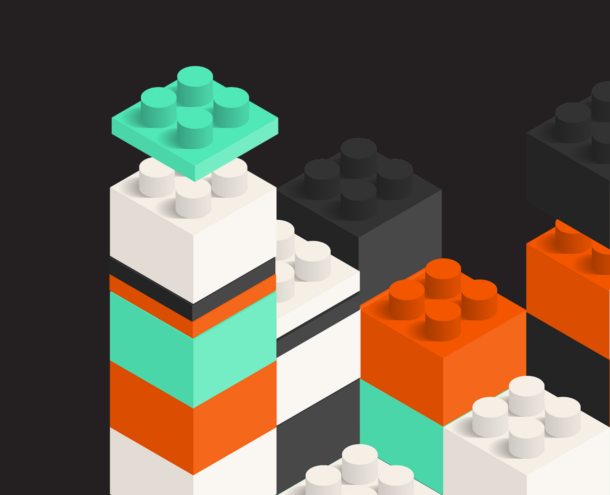The detective’s wall: How AI tools are reshaping creative problem-solving

Whether it’s true crime documentaries, police procedurals, or film noir, we’ve all seen the classic detective’s wall. Photographs, documents, newspaper clippings, and ideas scrawled on post-its, all connected by a zigzagging red string.
This visual manifestation of complex problem-solving isn’t just dramatic television—it’s becoming the perfect metaphor for how professionals are navigating the expanding universe of AI. As these technologies revamp our workflows, we’re no longer following linear paths from ideation to execution. Instead, we’re standing before virtual detective walls, navigating constellations of possibilities, connecting threads between ideas that AI tools help us generate at dizzying speeds.
This shift from linear processes to multidimensional explorations is rewiring how we approach creative challenges—and evolving how we operate in an AI-enhanced landscape.
From linear journeys to multidimensional landscapes
According to a recent Survey Monkey survey, 88% of marketers have incorporated AI into their day-to-day workflows. The adoption is refining not just what we create, but how we create it.
Traditional creative processes followed predictable trajectories: receive brief, brainstorm concepts, select winners, refine execution, deploy. This structured journey served marketing professionals for generations, providing structure and clarity through well-defined stages.
Now imagine receiving that same creative brief but tackling it with AI—each prompt generating dozens of potential directions, variations, and unexpected connections. This isn’t merely a faster version of the same process; it’s an entirely different approach to creative thinking.
For example, a straightforward brand naming exercise using AI tools within minutes becomes an investigation of linguistic roots, cultural associations, competitor analyses, domain availability, and trademark implications. What began as a focused creative session morphs into an expansive exploration that can prove equally inspiring and paralyzing.
Consider how people approach puzzles. Some methodically select pieces from the box, carefully evaluating each for fit. Others dump everything onto the floor, allowing patterns to emerge organically while multiple sections take shape simultaneously. The AI approach resembles the latter—spreading all possibilities before you at once, creating both opportunity and potential overwhelm.
Industry data confirms creative professionals find AI most useful in early stages like idea generation (38%), but significantly less so in final production, product development, or marketing phases (each around 6%). This pattern reveals AI’s strengths and limitations—exceptional at expanding possibilities but requiring human judgment to narrow and refine them.
Cultivating your detective’s mindset
Just as a skilled investigator maintains focus on solving the central case while pursuing countless leads, professionals must develop cognitive frameworks to prevent drowning in the ocean of AI-generated possibilities.
This means maintaining unwavering focus on the core problem to be solved—the “crime boss” at the center of our investigation—while systematically mapping connections. Success requires developing personal systems for tracking promising directions, regularly stepping back to assess the overall pattern of evidence, establishing criteria for determining which paths deserve further development and recognizing when it’s time to stop chasing threads and start synthesizing.
For instance, a marketer working on a campaign might use AI to generate initial concepts, but then physically map them on a whiteboard, grouping related ideas and identifying gaps. This visual organization helps maintain perspective when diving back into AI tools for deeper exploration — keeping the central objective visible even as the possibilities multiply.
The human element becomes more crucial, not less. AI tools generate countless possibilities, but discerning which ones contain genuine potential remains uniquely human territory. The real magic happens when marketers develop the critical judgment needed to see patterns and connections that others miss.
Finding your AI rhythm
The most effective AI users understand that these tools aren’t one-size-fits-all solutions but highly personalized extensions of individual creative processes. Implementation varies dramatically based on personal preferences and workflows.
Some discover their ideal approach through structured experimentation—testing different AI tools and prompts for specific creative tasks and noting which produce the most useful results. Others may create physical systems—printing AI outputs and organizing them visually, maintaining a dedicated notebook to track high-potential concepts, or scheduling regular “zoom out” sessions to reassess overall progress. The key isn’t finding the “right” system but recognizing your natural thinking patterns and creating an AI workflow that complements rather than disrupts them.
Advanced users are beginning to build customized systems tailored to their specific needs—imagine a branding strategist creating an AI agent trained on their company’s key brand outcomes, allowing them to input any client name and receive targeted ideas complete with rationales and implementation costs.
As we adapt to these tools, we’re finding ways to make them conform to our creative processes rather than completely reinventing how we work. The technologies themselves are also evolving to accommodate different working styles, recognizing that modes of creative thinking are deeply personal.
Better, not faster
Contrary to popular assumptions, these technologies don’t necessarily make work faster, but when used effectively, they can make it better.
Marketing professionals may see significant time savings during ideation phases, but this time gets reallocated to evaluation and refinement. What emerges is a quality enhancement where the time saved generating initial concepts shifts to evaluating, refining, and building upon AI-generated foundations.
Even for those who use AI throughout their creative process, the shift in effort changes where and how they spend their time, but doesn’t necessarily decrease time spent. Brand strategists who previously spent weeks researching market positioning might now generate competitive analyses in hours, shifting their focus to evaluating strategic implications and crafting more nuanced brand stories.
Designers who use AI for visual execution allocate more time to refining conceptual directions, knowing slight variations in prompts yield dramatically different results. This shift doesn’t eliminate creative labor—it redistributes it to where human judgment adds the most value, regardless of which project phase that might be.
What’s happening isn’t time compression but time reallocation. Marketing professionals spend less energy generating raw materials and more time curating, combining, and elevating promising directions. This rejuvenates the creative value equation, prioritizing critical thinking and synthesis over raw production capabilities.
Democratizing creative potential
Beyond workflow transformation lies a more profound impact: the democratization of creative capabilities. The divide between specialized knowledge and general access is evaporating at unprecedented speeds.
Consider software development, where technical expertise once created significant barriers to entry. Today, anyone with a smartphone and internet connection can generate functional code through AI interfaces. The geographical and educational gatekeeping that once determined who could participate is rapidly dissolving.
This closing of the “intellectual property gap” dramatically reshapes innovation landscapes. What emerges is a creative economy where vision, imagination, and problem identification become more valuable than technical execution skills—changing not just how we create, but who can participate in creation.
The new creative reality
The detective’s wall remains our most apt metaphor for navigating this new landscape. Solving complex cases—or creating breakthrough work—still requires human insight and judgment. But the tools for gathering evidence, exploring connections, and synthesizing solutions have evolved dramatically.
This evolution demands we develop new skills. The ability to maintain focus amid exponential possibilities, to recognize meaningful patterns in chaos, and to connect threads that others miss—these are becoming the defining capabilities of effective marketing professionals in the AI era.
Whether you prefer your puzzle in the box or dumped across the floor, AI has permanently transformed problem-solving. The question isn’t whether to adapt, but how to make these powerful new tools amplify your proprietary creative process rather than overwhelm it.



